Yep, last month I quietly celebrated the three-year anniversary of switching my diet and regaining my health. It’s been a crazy ride, and I thought it was time to update you on some of my experiences over the years, and share some quick fundamentals that I’ve learned along the way.
1. Broth is king. Simply put, having a big store of of broth in the freezer is one of the most important things you can do to regain and maintain your health. Not only is it full of essential nutrients, it has an unlimited benefit in the kitchen – there’s a good reason that it’s one of the first things that chefs learn in culinary school. Have a bland, or dry hunk of meat? Whip up a quick broth gravy. Feeling under the weather? Drink some broth, make a broth-based soup, or cook some rice in a broth. Don’t like eating kale, chard, or greens? Simmer them in some broth; you’ll change your mind pretty quickly.
Making broth is as easy as throwing together some aromatic vegetables, herbs, and bones in a pot and simmering them for several hours. You can either buy bones from your local market, or use the bones leftover from meals, like in the ham photo above. Try making broth with any protein source – pork, beef, chicken, turkey, duck, fish, and shellfish – all are delicious and nutritious.

2. Always consider mise en place. Prep and arrange your ingredients before you start cooking; this will help you to keep a clear head when things start getting hairy while finishing a recipe. The picture above is from one of the recipes in my cookbook – Crawfish Étouffée – where the prep ends up taking more time than actually cooking the recipe. In this case, not having everything arranged ahead of time would be a disaster. Nearly every one of my kitchen mishaps is caused by inadequate preparation!

3. Fresh, quality ingredients > fancy recipes. The photo above is from one of my favorite meals this year, a bone-in ribeye from US Wellness Meats. I simply seasoned with salt and pepper, rested it for 30 minutes, and threw it on a hot grill.
This meal perfectly demonstrates that cooking doesn’t always have to be an involved, impressive affair. Another good example is my Cacao-Rubbed Steak recipe, pictured at the beginning of this article. In fact, I’d say half of the meals we eat at our house wouldn’t even be considered “cooking” or blog-worthy (one of my favorite go-to meals is broth-cooked rice, sardines, and furikake!).
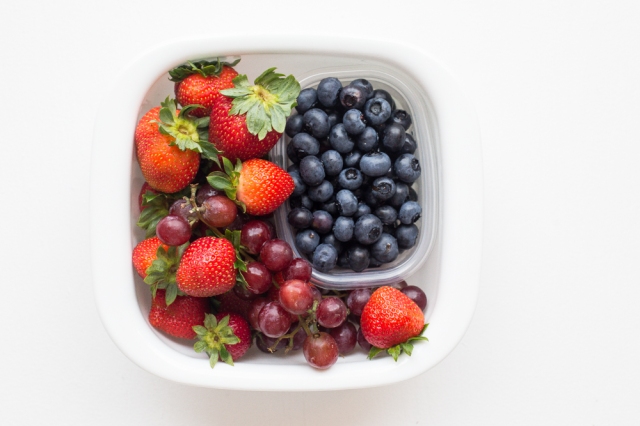
4. Don’t fear fruits. Unless you are attempting dramatic weight loss, fruit is your friend. Personally, I eat at least one or two servings of fruit a day, usually during breakfast (or a post-dinner treat). I tend to prefer berries over fruits; berries are packed with vitamins, fiber, and antioxidants, and have a generally lower sugar content than most other fruits. Cherries and kiwi aren’t bad either in terms of sugar compared to other fruits. Buy seasonally, locally, and grow your own if you have the time, climate, and inclination.

5. Make calculated “cheat meals”. I should start off by saying that I don’t really buy into the concept of “cheat meals”, wherein you eat whatever you want and try to rebound afterwards. Instead, we came up with a diet that allows us a few gray-area foods without falling completely off the bandwagon. We eat dairy in moderation, and tailor our rice and potato consumption to align with our bodies’ needs (around 150g/day for me, 100g/day for my wife and son); for us, this approach works – I’m happy to say that I haven’t had a single “cheat meal” since switching my diet, and it’s not due to any sort of steadfast resolve. We simply eat a diet that doesn’t feel like a diet. As I’ll explain in my book, I don’t consider foods like dairy, rice, and potatoes to be a “cheat”, as if they were in violation of a healthy diet. Instead, it’s more important to understand and figure out how these foods fit into your lifestyle.
We also have fun with our food from time to time. Check out this epic pizza my wife made using my gluten-free, grain-free pizza crust recipe. As you can imagine, our son Oliver was head over heels with this meal. Other times, we make things like gluten-free waffles or cheeseburgers on a gluten-free bun.
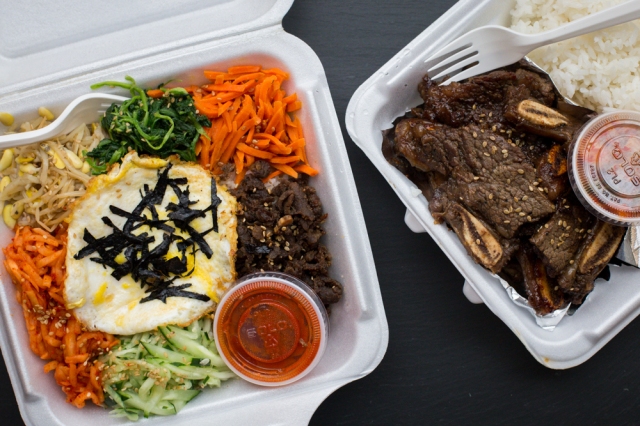
6. Eat out smartly. Over the years, we’ve scoured the menus of our local restaurants and have found items that fit within our dietary parameters (albeit sometimes loosely – sometimes it’s impossible to avoid added sugar or seed-derived oils). That way, if we are stuck out in town, or if we really aren’t in the mood to whip up dinner after a long work week, we have options that won’t wreak havoc on our bodies or our consciences. Favorites include our local Korean (pictured above is Bi Bim Bap and Kab Bi, both in my cookbook), Vietnamese, Thai, Indian, and Mexican restaurants, who are very accommodating with our sometimes unusual requests (I always get extra tendon in my Pho!).
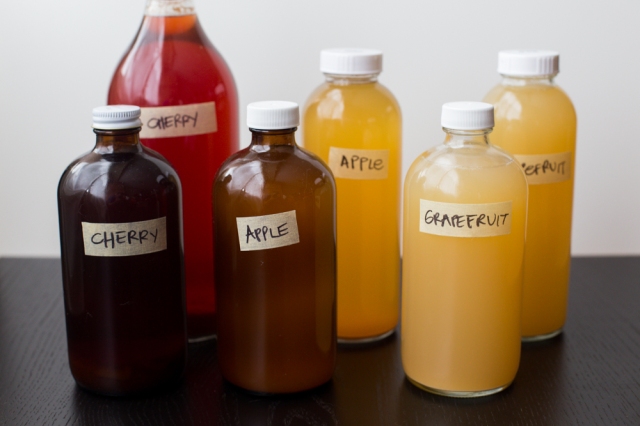
7. Home fermentation is healthy, cheap, and fun. How much does it cost for kombucha from your local health food store? Lemme guess – $3 to $5 per bottle, right? A couple years ago, I bought a kombucha starter online and started brewing my own; after the initial investment in a fermentation jar, it costs me about $1.50 per gallon brewed, most of the cost coming from the juice and fruit I use to flavor the kombucha during its second fermentation period. I plan on doing a full post on how I make my homebrews, so stay tuned – in the meantime, Jill Ciciarelli’s Fermented is an excellent book to get started.
Home fermentation doesn’t start and end with kombucha. Fermenting your own vegetables is a rewarding and healthful experience. We always have a jar of Kabees el Lift in our fridge, and I often eat it with my lunch. There are also some great fermented veggie recipes in my cookbook, including Kimchi and Dill Pickles.
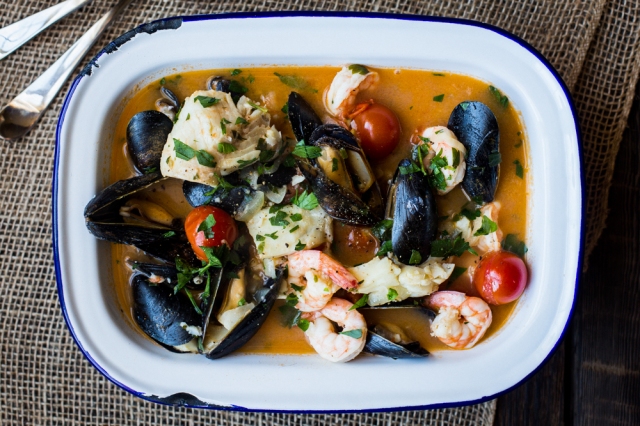
Brudet – Croatian Seafood Stew
8. Seafood. Always. It’s a tragedy that seafood isn’t appreciated as much in the United States as it could be. Seafood is quick to thaw, quick to cook, and consistently delicious. It’s also one of the most nutrient-dense foods out there, and cooking seafood at home is significantly cheaper than ordering it at a restaurant.
My advice is to always keep a bag of frozen shrimp and some flash-frozen fish filets in your freezer for those days that you forget to thaw out some meat – they thaw quickly under cool water. Secondly, keep cans of clams, sardines, and other small fish in your pantry, so you can add them to dishes or salads in a pinch. Lastly, anchovy paste and fish sauce can bring tremendous flavor to dishes and don’t often leave a fishy taste in your food – so use them as a seasoning, as you would salt and pepper.
9. Experiment with new vegetables, and be nice to vegetable eaters. Check out this Wikipedia list of culinary vegetables; pick a vegetable and figure out how to cook it. You never know, it might be your new favorite thing. Diversifying your vegetable intake will enrich your palate and possibly expose you to nutrients you aren’t getting in other vegetables.
One last note. Have you ever seen a Vegetarian or Vegan convert to an ancestrally-minded diet as the result of an argument with an omnivore? Me neither. People in the Paleo community are passionate about about how they’ve regained their health, just as much as the other camps. I usually tend to agree with Vegans and Vegetarians on a number of issues – the current agricultural and meat-processing methods used in America are terrible; whole foods are better than processed foods; sugar is best avoided – and I like to focus on these commonalities and let them draw their own conclusions. A dietary journey is often an individual journey. I’ve found that steering clear of full-on arguments is healthy for both camps; if anything, I point people to a source of scientific literature. This article does a good job of summarizing a majority of the health concerns that surround the ancestral health movement.

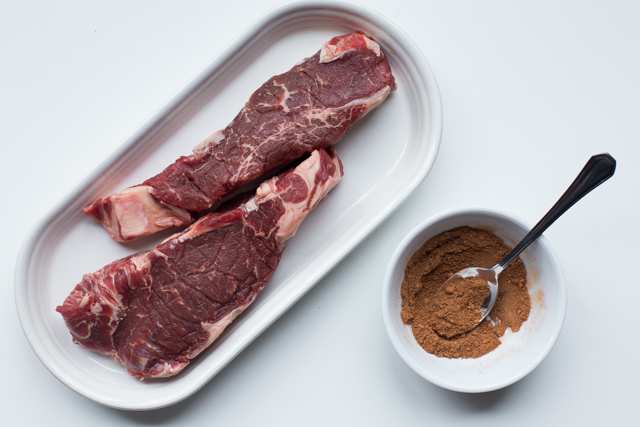

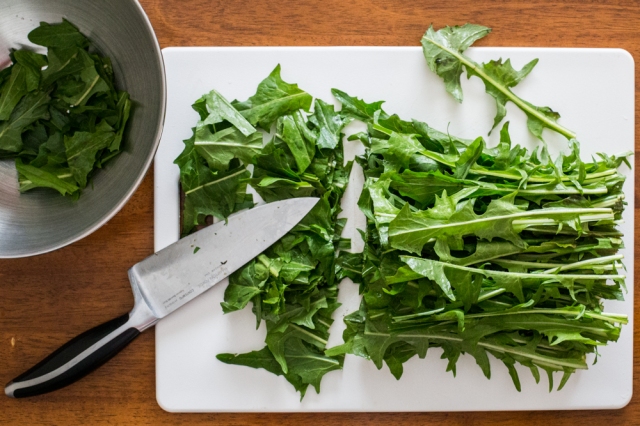
I wish, wish, wish I liked Seafood… I just CANT get into it. I can do some salmon, but its still hard for me. :-( And I want to eat rice…….but it gives me a food baby belly, dang it. I love all your suggestions- Im on year 3 as well… just wish I could get those couple of things under my belt! Also fermented foods- not able to eat those either! always evolving and trying though!! Thanks for all you do! Your pizza is now on our menu every month for a “special” treat, since I still have a reaction sometimes to tomatoes! LOOOOVE your crust best of all!
LikeLike
Karen, it’s totally understandable if you don’t have a taste for seafood, you’re definitely not alone! Personally, I’m not a fan of scallops, but it’s game on with all other sea creatures. Have you tried several different rices, like basmati? I’m curious to see if your issues are across all types. Glad you like my pizza recipe!
LikeLike
Try a white pizza- no tomato sauce. We love it. If you want some of the sauce flavor, you can sprinkle the herbs on the crust.
LikeLike
Another great post. Thanks for sharing your insights.
LikeLike
Thanks, Katherine!
LikeLike
I love your blog post and everything…BUT FROZEN SHRIMP? no thank you.
LikeLike
Why not? Most shrimp sold at the store that are not currently frozen were frozen at some point. I find that frozen shrimp from Whole Foods, especially if they’re cooked with the shell on, taste as good as any shrimp I’ve ever eaten.
LikeLike
Isn’t the Paleo diet very expensive? You have to eat grass fed meats etc. How do you get started?
LikeLike
Bill, while grass-fed meats are important, if they’re outside of your budget then I would focus on conventionally-raised lean meats and getting fat from other sources (good butter, coconut oil, etc). Chris Kresser’s book, “Your Personal Paleo Code” just came out last week and I think it is an excellent book to help people get started. He includes several tips to eating Paleo on a budget. While it can’t compare to the price of, say, Top Ramen, eating Paleo is definitely doable on any budget.
LikeLike
I love these general tips. Trying to make this transition my self and your advice and insight has inspired me to keep going many times. Happy new year!
LikeLike
Thanks Drew! I’m glad to hear that I’ve been an inspiration for you. Keep it up, and Happy New Year!
LikeLike
I think that by eating seafood from the US is a mistake, it is very contaminated! I only eat fish from Alaskan waters as it is the safest for now anyway.
LikeLike
Hi Sydney, I agree that there are some locations that you don’t want to get fish from. I usually consult the Monterey Aquarium Seafood Watch list (http://www.seafoodwatch.org/cr/SeafoodWatch/web/sfw_factsheet.aspx), which is a great resource to know what seafood is clean and sustainably caught.
LikeLike
Reblogged this on The Ageless Dummy.
LikeLike
Following your example, I’ve found that adding some carbs back into my diet has been very helpful. Would you mind sharing more rice recipes? There’s not a lot available written from a Paleo perspective. Thanks!
LikeLike
Hi Steve, there are a few already on my site:
https://thedomesticman.com/2013/08/06/rice-and-fish-fritters/
https://thedomesticman.com/2012/05/31/mexican-rice/
https://thedomesticman.com/2012/09/11/steamed-basmati-rice/
https://thedomesticman.com/2012/11/20/mushroom-risotto/
There are also plenty in my cookbook, like Dirty Rice, Congee, Paella, and Fried Rice. I have plans for more this year, too!
LikeLike
I’m very interested in starting the Paleo diet but am rather hesitant as I am a new mom who is going back to work and doesn’t have a lt of time to cook (I’m a teacher so even when I come home, I have to do work). Are there any Paleo staples to keep stocked at all times that I should know about? Also what are some easy recipes that don’t require a lot of prep? My family and I have developed some BAD eating habits that are going to take some time to reprogram. Any advice? Where should we start? Thanks!
LikeLike
Hi Kristin, thanks for writing. There are several cookbooks and websites out there tailored to families with young children – paleoparents.com is a favorite, and their book Eat Like a Dinosaur is a great book for families. Well Fed, Well Fed 2, and Nom Nom Paleo’s book are my favorites for easy, delicious meals. Bill Staley and Hayley Mason of also have a book (and eBook) tailored for those just starting out. Hope that helps!
LikeLike
Kristin, check out the Paleo menus and shopping lists on Once A Month Meals, it has made my life much less stressful. My family and I developed bad eating habits also and I really wanted to get us back on track but found it frustrating with all of the different suggestions out there. You can choose from whole foods, paleo, gluten free, etc… Hope this helps!
Russ, thank you for making it o.k. to eat rice, potatoes and dairy in moderation. I find myself needing these things in my diet also, but felt guilty not following the “code”. Great post!
LikeLike
I agree with your concept of cheating. The 80/20 thing makes no sense especially when one has to spend so much time recovering, and the cleaner I eat, the less junk I can tolerate. I started following a paleo life a couple of years ago with weight loss as my intention (I was and am in good health). Moderate weight loss has ensued, so for me, a ‘cheat’ is an occasional high carb banana or sweet potato. Very healthy, just not something in my regular weekly meals.
And I agree with the “no to seafood” attitude of many commentors. I am allergic to scallops and crab, so much so that mild cross contamination can make me sick, itchy and wheezy for days. Growing up, I always got ill after eating fish and since no one thought it was an allergy, I also grew up hating fish. To this day, I can’t eat it more than a bite or 2 maybe twice a year although I fix it weekly for my husband.
Glad I found your blog Russ.
LikeLike
Thanks Lauri!
LikeLike
Thank you for the tips, I just bought the book “Your personal paleo code” and I am excited to read it. I am trying to figure this whole paleo thing out and your tips have been helpful! Thanks!
LikeLike
Ezzirah, starting with Chris Kresser’s book is a great move. Good luck with your journey!
LikeLike
I agree with the Seafood point.
If it swims (or gets eaten by something that swims, eat it !!
LikeLike
Russ, I just found your site when looking for a paleo pizza crust that resembled the real thing. Looks like yours might be the Holy Grail I’ve been looking for! Have you ever tried freezing the prepared, undressed crust? It would be helpful to make up a few and freeze for when the pizza urge strikes but the preparation urge doesn’t! Thanks, and I’m inspired by your story.
LikeLike
Jill, I’ve gotten feedback from many readers that they do this same thing – make and prep the crust (do the initial bake), then cool and freeze it. Sounds like it works wonderfully!
LikeLike
My wishes have been granted! Thanks!
LikeLike
Great article, I appreciate how realistic you are in your suggestions. Thank you.
LikeLike
Thanks Wendy!
LikeLike
This is such a terrific post—whether someone is new to paleo or just needs a new-year’s refresher/encouragement. You are especially right about stock and broth—they’re now one of my favourite things! Thanks for posting.
LikeLike
Congrats on the 3 years. I’m getting close to 3 years as well so we’re in the same boat. I love your pictures on this post too, particularly the mussels and shrimp one. Have a good day.
LikeLike
What a great post! my children and I switched to gluten free and low dairy as few years ago due to my kids health issues. We are now weaning off grain was well. It started out in an effort to regulate my insulin and lose weight but now I find the benefits to be far more holistic that just losing a few pounds. I do also find this style of cooking quick and easy once Setup in the cupboard and the kids are far more likely to East meals prepared “cleanly”, so it’s won win. I like your balanced and realistic approach… There are times And places for everything and Good to remember that its possible to limit ‘ difficult’ foods without sacrificing taste and enjoyment!
I didn’t realise the way we eat had a label, so will be exploring your blog further!
Cheers!
LikeLike
Great job Russ! I can’t wait to make this Pizza dough. I’m just finishing up my first week of paleo mixed with 16/8 fasting and it’s been great so far. All the articles you write are really helpful. Keep up the great work!!!
LikeLike
Thanks, Tim!
LikeLike
Broth is made from meat! Stock is made from bones!
LikeLike
Bryce, I don’t disagree. There are several schools of thought as to which names are appropriate; the prevailing thoughts at the presence of bones (like you mention) and whether or not the liquid is seasoned. In short – the etymology of those two words are a big mess, especially in the US :)
LikeLike
Russ,
Here is my opinion on broth vs. stock. In my family (Immigrants from Scotland) Scotch Broth soup starts with lamb shank slow cooked with aromatics. This simmered for hours at Gran’s house! The meat was picked from the bone and the bone discarded. Soaked barley, onion, carrots always added, usually turnips, cabbage, etc. Bottom line…It was never called Scotch Stock!
LikeLike
I have been what I call paleo for a year now. HOWEVER, I don’t eat grass-fed beef or chicken because, frankly, I can’t afford it! I don’t eat bread ( unless I make it myself with almond and/or coconut flour ), pasta, boxed or canned foods….and my processed sugar intake is almost nil. We eat sweet potatoes and occasionally white potatoes. We have rice maybe once every two weeks. I try to buy mostly grass-fed butter and fresh, local eggs. Dairy is very limited, mainly because I am lactose-intolerant! I eat nuts and fruits and have “green” smoothies several times a week. I LOVE fish, so we have that fairly often. We eat only fresh vegetables that are raw, roasted or braised. I’ve said all this is say that I’ve read a lot of blogs about paleo and I feel like even though I’m trying to eat clean, I’m not REALLY paleo if I don’t eat grass-fed meats and poultry!! It’s becoming a stumbling block to my thinking about the way I’m eating….like maybe my Omega3 and Omega6 ratio is going to get messed up and HURT rather than HELP me:-(. Does that sound crazy? I’ve lost almost 25 pounds and my cholesterol and triglycerides are perfect, btw!
LikeLike
If you’re eating that much cleaner than the rest of the general western population then you shouldn’t stress as much about getting into the micronutrients :) you’re eating real food! it should sort itself out naturally. I just ordered some fish oil for my omega 3 because I don’t eat enough fish, and in the supplement is also some added Vitamin D3 now that it’s heading into winter over here in NZ. This is the first supplement i’ve ever decided to order and really its just to see if there is any difference in my wellbeing. But for the most part, don’t stress, you’re doing far better than a whole heck of other people :-)
LikeLike
Frances, I agree with Natalie; I wouldn’t worry about losing the forest for the trees. I would focus on eating cheap sources of Omega 3s like sardines and mackerel. Supplementing with Green Pastures fermented cod liver oil could also help your intake of Omega 3s. Even as a big, famous food blogger (ha!) I can’t afford to eat only grass-fed and pastured animal protein; for us, it’s a matter of finding that balance between health and affordability.
LikeLike
This was a great read! There’s so much to learn from this article. Thanks for sharing your experience.
LikeLike
Thanks as always Russ! I thought I’d read every page of your blog, but somehow I must have missed this one! I sort of stumbled across it today, and of course it all rings true for me :)
I’m in year 5 of my paleo life, and feeling healthier than ever.
The part about trying to convert vegetarians made me laugh, because back when I was a vegan, and sick often, my chiropractor and a few other friends kept trying to educate me and get me to start eating meat. I was stubborn.
I’m so grateful that I finally figured it out for myself, through my own searches to feel better.
Thanks for all your many posts, wonderful recipes, and just for being you!
LikeLike